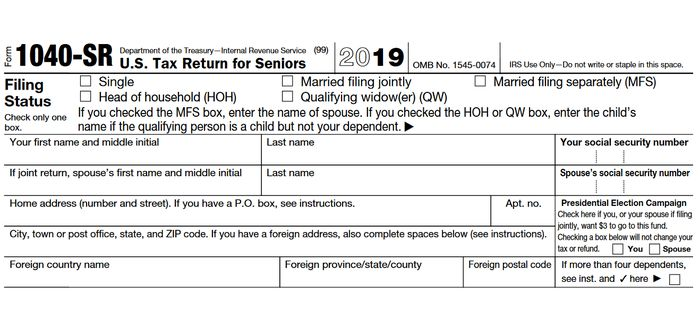Schedule A (Form 1040 or 1040-SR) Itemized Deductions Form is an IRS form designed for U.S. taxpayers who choose to list their tax-deductible expenses rather than taking normal deductions. Schedule A form can be an optional add-on to the standard 1040 form U.S. taxpayers use to submit their annual income tax returns.
Example
Certain expenses that most taxpayers incur are tax-deductible, and if you choose to make them a part of your tax deductions, your earnings will be decreased, and you'll pay less tax on them. You must fill out the tax schedule A form if you decide to itemize your deductions.
You may make $60,000 by 2021. However, when you combine the deductions you may be entitled to, you could get tax deductions of $15,000. In this scenario, you'd have to be taxed on just $45,000. To allow the IRS to believe in the tax return, you filled out for a salary of $45,000; it is necessary to prove the method you used to arrive at the figure. This is the reason why Schedule A is the key.
The one-page form has six sections. Each section has several lines detailing the deductions for itemized deductions available to taxpayers in the taxation code. You must enter the amount you paid for a specific line if you paid the cost. Enter "0" if you didn't be able to pay any of them, for instance, mortgage interest.
Take all your deductions, enter the total number in line 17 on the Schedule, and then transfer that number to line 12 on the Form 1040 tax return. Then, subtract the amount of your adjusted gross earnings when you file your tax return, and the remainder is the income that you must be taxed on.

Who Can File
Anyone U.S. taxpayer can file the Schedule A Form. The option of claiming itemized deductions is an alternative to the standard deduction. Taxpayers have the option of choosing which that will provide them with the most savings. Certain deductions previously available to taxpayers have been eliminated since tax reform legislation. Tax Cuts and Jobs Act which was passed in 2017.
These include deductions for theft or casualty losses that were not in a catastrophe region; the interest charged of home equity loan utilized for other purposes than building, buying, or renovating a house, as well as "miscellaneous deductions," which included tax preparation charges and other expenses related to work that the employer was not able to cover.
This law has also restricted the amount taxpayers can take deductions for local and state taxes to the maximum of $10,000, which is $5,000 for couples who file separately. The law also doubled the standard deduction. The law almost tripled the standard deduction. The numbers are adjusted every year:
- For the tax year 2021, tax deductions for taxpayers who are single and married couples who file separately are $12,550. For couples filing jointly, the limit is $25,100. For the head of household, the figure is $18,800.
- For the year 2022's tax year, tax deductions for taxpayers who are single or married couples who are filing independently are $12,950. For married couples who are filing jointly, it's $25,900. For the head of household, the deduction is $19,400.
Benefits
For those who live in states with high tax rates, the limit of $10,000 for tax deductions for state taxes could be the primary aspect. If a couple cannot come up with at least $14,000 of eligible deductions in addition to the $10,000 deduction, they'll likely prefer using an ordinary deduction.
It was the situation for most taxpayers whose eligible deductions were less than the standard deduction under the older rules. Additionally, they have the benefit of not having to track their expenses or keep stacks of receipts. Furthermore, the deductions for itemized deductions are susceptible to being challenged by IRS. IRS, in contrast to the standard deduction, isn't.
However, filing Schedule A makes sense if a taxpayer still has sufficient qualified expenses to be above what is allowed by the tax code. For taxpayers with the highest house prices, mortgage interest can be an ideal benchmark for deciding which deduction to select. Suppose your annual mortgage rate (as provided on behalf of your bank in a Mortgage Interest Statement, also known as Form 1098) is greater than what is allowed for the typical deduction.

In that case, making deductions itemized is beneficial instead of taking standard tax deductions. If you're planning to purchase an apartment, remember that the law has now capped mortgage interest deductible up to $750,000 for the initial portion of debt for loans made following the 15th of December 2017. Before this, the limit was one million dollars.




